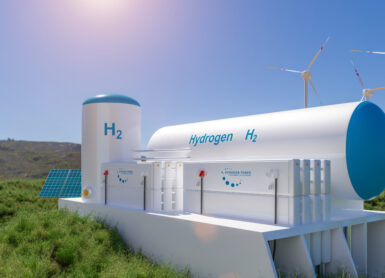

Gexcon is pleased to announce that we will present, sponsor, and exhibit at the 2024 AIChE Spring Meeting and 20th Global Congress on Process Safety (GCPS). The event will be held on March 24 -28 at New Orleans Ernest N. Morial Convention Center, New Orleans, LA.
Gexcon US CEO – Principal Engineer Scott G. Davis, PhD, PE, CFEI, will present three papers and will be accompanied by Principal Risk Consultant Vinicius Simoes, will present one.
As well as the presentations, Gexcon will also host a sponsored technology workshop delivered by Scott G. Davis, which will highlight case studies on how to address safety challenges as they pertain to facility siting.
Further details can be found below:
TECHNOLOGY WORKSHOP
Title: How To Ensure your Facility Is safe In A Cost-Effective Manner
Presenter: Scott G. Davis
Location: 211 (New Orleans Ernest N. Morial Convention Center)
Time & Date: Tuesday, March 26 | 10.15 – 11.45 AM CDT
Workshop Description (Click to expand):
Facility owners and operators are often faced with difficult questions regarding their facilities’ safety. Many of these decisions have serious economic repercussions in the lifecycle of an asset and require further engineering analysis. Retrofitting an existing facility, adding new equipment, or building a new module in a facility can represent millions of dollars in capital and operational expenditures, so it is imperative to conduct proper assessments to achieve safety objectives in a cost-effective manner.
This technical workshop will highlight case studies on how to address safety challenges as they pertain to facility siting. We’ll explore examples that demonstrate how to use quantitative, consequence-predictive tools for informed decision-making with safety as a priority. It will also address strengths and limitations with various study types as they increase in complexity, establishing a process to deliver comprehensive safety assessments with business economics in mind.
PRESENTATION 1
Title: Large Scale Testing Confirms: A Deflagration to Detonation Transition Needs to be Considered in Facility Siting
Author: Scott G. Davis
Presenter: Scott G. Davis
Location: 208-209 (New Orleans Ernest N. Morial Convention Center)
Date & Time: Monday, March 25 | 14.00 – 14.30 CDT
Abstract (TBC):
PRESENTATION 2
Title: How to Accurately Predict Thermal Runaway: Experimental Study Involving LAB-Scale and Full-Scale TESTS
Author: Scott G. Davis, Derek M. Engel, Tom DeBold, John Pagliaro
Presenter: Scott G. Davis
Location: 210 (New Orleans Ernest N. Morial Convention Center)
Date & Time: Monday, March 25 | 16.00 – 16.30 PM CDT
Abstract (Click to expand):
Thermal runaway involving chemical reactions can be a complex process, which typically involve an exothermic reaction (i.e., a reaction that gives off heat). This will result in a temperature rise where reaction rates will exponentially increase with temperature. If sufficient cooling is present, the reaction will remain under control; however, if heat generation exceeds the heat loss, then thermal runaway can occur.
This paper will present the experimental methods used to predict the runaway condition from the auto-polymerization of 80% grade of divinylbenzene (DVB80) in ISO-containers on July 14, 2012 when an explosion and ensuring fire significantly damaged the container ship MSC Flaminia that was transporting cargo from the United States to Europe. This paper will discuss how certain investigators used incorrect test methods and erroneously concluded that DVB80 could not violently runaway and that “mild” exotherms were observed. While their test methods on “face” value appeared to take into account elevated temperature conditions, they mistakenly neglected the importance of increased heat loss due to the large surface-area-to-volume ratio inherent in smaller test apparatus. When these tests were repeated with appropriate lab scale calorimetry tests, violent thermal runaway was predicted as well as the time to runaway conditions. To validate the accuracy of the new test, actual full-scale runaway tests were performed with an actual ISO-container. The lab scale calorimetry tests agreed very well with the full-scale ISO-container tests, whereby the time to thermal runaway was very accurately predicted and demonstrated the importance of taking into account scaling issues when investigation runaway conditions.
PRESENTATION 3
Title: When Should We Go Beyond Empirical Analysis
Author: Vinicius Simoes
Presenter: Vinicius Simoes
Location: 223 (New Orleans Ernest N. Morial Convention Center)
Date & Time: Monday, March 25 | 16.30 – 17.00 PM CDT
Abstract (Click to expand):
A maioria das análises de localização de instalações começa com uma análise empírica básica das consequências do pior caso. Em muitos desses estudos o que acontece e que rapidamente demostramos que o impacto nos edifícios excede os critérios aceitáveis e requerem uma análise mais aprofundada. O próximo nível de análise inclui várias técnicas para reequilibrar o conservadorismo e o realismo, incluindo estudos quantitativos baseados no risco que produzem curvas de excedência, etc. as mudanças no próprio esforço de modelagem de consequências – não é incomum que esses estudos resultem em cargas de projeto que exigem reformas dispendiosas nos edifícios.
Como etapa final, alguns desses estudos recorrerão à dinâmica de fluidos computacional (CFD) para justificar evitar essas modernizações dispendiosas. Ao seguir este processo, o custo do estudo de localização da instalação é maximizado e há uma maior probabilidade de que retrofits dispendiosos de edifícios que não sejam realmente aprovados numa análise de custo-benefício possam ser forçados a avançar. Este artigo demonstrará alguns dos benefícios do uso de modelagem CFD mais realista no início do processo para refletir com mais precisão a extensão real dos danos potenciais ao edifício.
Ao usar a combinação certa de modelagem empírica e CFD antecipadamente como parte de uma análise baseada em risco, os estudos de localização das instalações podem refletir de forma mais realista o dano potencial e fornecer maior custo-benefício – ou seja, reduzir o verdadeiro custo geral do estudo, ao mesmo tempo que sendo também mais realista sobre quando poderá ser necessário reformar edifícios para atender a determinadas cargas acidentais de projeto. O artigo se concentrará em um exemplo real desta aplicação.
PRESENTATION 4
Title: – Strategies to Safely Manage the New Hydrogen Technology
Author(s): Scott G. Davis, Derek M. Engel, Tom DeBold, John Pagliaro
Presenter: Scott G. Davis
Location: 210 (New Orleans Ernest N. Morial Convention Center)
Date & Time: Wednesday, March 27 | 09.00 – 09.30 AM CDT
Abstract (Click here to expand):
With the advent of hydrogen as a future clean fuel and energy carrier due to its lower CO2 emissions, it imperative that we fully understand and manage the risks associated with hydrogen technology to ensure its safe implementation. While many of the historical incidents involving hydrogen have similarities to other fossil fuels, it is important to understand hydrogen’s unique properties and associated hazards. Hydrogen can be stored and transported as a compressed gas, however, due to its comparatively small energy content per unit volume as a gas, it is necessary in some instances to liquefy hydrogen.
Given the complex conditions in which hydrogen can be used and stored, it is important to understand all the possible nuisances of this fuel in order to define basic safety specifications and avoid possible pitfalls. This is especially true given the very high reactivity of hydrogen, its extensive flammability range, extremely low ignition energy, and its ease of transitioning to detonations as compared to other traditional hydrocarbon fuel gases. This paper summarizes the critical combustion parameters associated with hydrogen and discusses its unique properties when it comes to evaluating unintentional releases. Novel experimental results will be shown to demonstrate such aspects. It will also provide critical safety strategies that will help reduce the likelihood and consequences of unintended catastrophic events, with the ultimate goal of ensuring that hydrogen is used safely and that certain pitfalls are avoided due to the unique properties of the fuel.
We’re excited to connect with you at Booth 419 during the conference., where we’d love to exchange insights and knowledge about the work you’re involved in. Our team is passionate about learning from others in our field and sharing our expertise as well. Let’s have a meaningful conversation and explore potential collaborations.
About the conference
The AIChE Spring Meeting and Global Congress on Process Safety is the year’s key technical conference for practicing chemical and process safety engineers, covering the industry’s critical needs more broadly and deeply than any other conference.
Other News @gb

Gexcon collaborate with Global R & D to present webinar | Understanding Hydrogen for Safer, Better Design and Operation.
Gexcon is pleased to announce that we will collaborate with Global R & D to deliver a knowledge-sharing webinar. Our esteemed colleague in Singapore, Richard Lee, will deliver this webinar entitled “Understanding Hydrogen for Safer, Better Design and Operation” which aims to…
News @gb
FLACS 24.1 is now live
Gexcon’s latest release, FLACS 24.1, marks a key advancement in the realms of geometry handling and fire safety simulation.
FLACS-CFD News @gb
Expert insights by Gexcon at the Hydrogen Safety and Hazardous Areas Conference
We are thrilled to deliver expert insights at the upcoming Hydrogen Safety and Hazardous Areas Conference in Brisbane, Australia.
News @gb